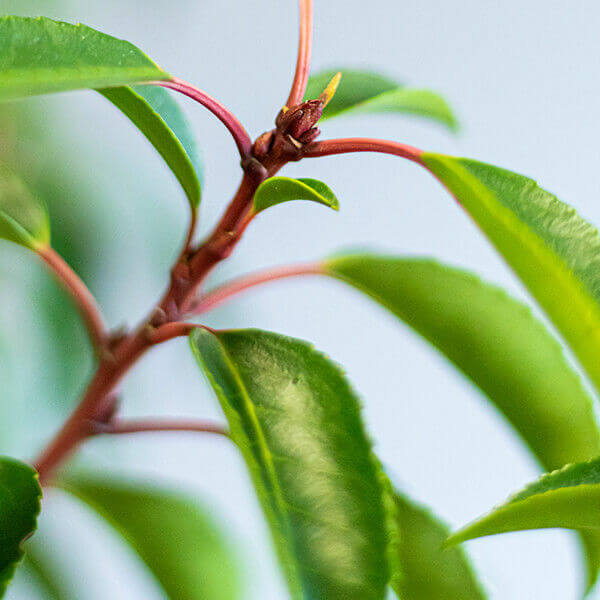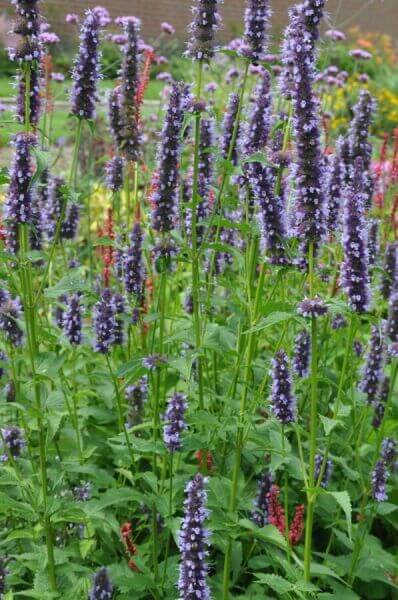Hedge Plants For Pathways
Hedge Plants For Pathways
Blog Article
Best Hedging Plants For Informal Landscaping
Boost your garden's attraction with lavish hedge ranges such as Yew (Taxus), Thuja, Laurel, Photinia, and Bamboo, commemorated for their structural integrity and environmental advantages.
Yew and Thuja offer evergreen coverage and winter season strength, while Laurel provides rapid development and broad, fragrant leaves.
Photinia includes seasonal charm with its vibrant red foliage, and Bamboo provides a low-maintenance, peaceful atmosphere.
These hedges improve air quality, minimize sound, and create tranquil, personal areas.
Correct planting, spacing, and upkeep make sure vigorous development and eco-friendly harmony.
Explore how these lavish ranges can raise your garden's beauty and well-being.
Secret Takeaways
Change Your Garden With Lush Hedge Varieties
- Select Yew for its thick, evergreen development and unparalleled longevity.
- Opt for Laurel for its quick growth and broad leaves, guaranteeing fast privacy.
- Select Photinia for its lively seasonal foliage, which turns a striking dark red.
- Utilize Bamboo for a low-maintenance, winter-hardy hedge with aesthetic appeal.
- Space plants 2-3 per meter and prune routinely for optimum development and health.
Popular Hedge Plants
When changing a garden with lavish hedge ranges, it's important to think about popular hedge plants such as Yew, Thuja, Laurel, and Photinia due to their unique qualities and advantages.
Yew (Taxus) is extremely respected for its durability and thick, green development, making it a prime choice for enduring landscapes.
Thuja is kept in mind for its evergreen foliage and robust winter resilience.
Photinia adds seasonal vibrancy with red leaves that darken gradually, developing dynamic visual appeal.
Laurel provides fast development and aromatic, broad leaves, perfect for fast privacy.
Furthermore, Bamboo is an excellent option for atmosphere, providing a low-maintenance, winter-hardy alternative that enhances the garden's aesthetic with its elegant, swaying walking sticks.
These selections deal with a variety of horticultural needs and choices.
Benefits of Garden Hedges
Garden hedges provide a multitude of benefits, making them an important addition to any landscape. These natural barriers are cost-effective to execute and supply significant wind security, improving air blood circulation and adding to sound decrease. The thick foliage of hedges like Thuja and Beech ensures privacy by obstructing visibility, developing a peaceful and remote environment.
Hedges likewise play a vital role in microclimate regulation, providing a steady environment that promotes plant growth and reduces temperature variations. Their detailed leaf structures filter toxins, enhancing air quality and adding to a healthier garden ecosystem.
Moreover, hedges stand out in sound decrease, taking in and deflecting sound waves to lower ambient sound levels. This double functionality of providing both acoustic and visual personal privacy improves the total tranquility and visual appeal of any garden.
Planting and Upkeep Tips
For a successful hedge, precise preparation of the planting area is important. Make sure the soil has proper pH and drainage to support strong root advancement.
Space the plants appropriately for the picked types. Water the hedge frequently during its preliminary development phase, adjusting as needed with seasonal modifications.
Carry out a systematic insect control and illness avoidance strategy, using chemical or natural treatments when necessary. Routinely check for aphids, termites, and fungal infections.
Apply mulch to retain moisture and suppress weeds. Seasonal pruning promotes thick development and air circulation, vital for plant health.
Following these standards will assist you cultivate a get more info vibrant, well-kept hedge that enhances the appeal of your garden.
Spacing and Trimming Guidelines
Spacing and Trimming Guidelines
Appropriate spacing and trimming are important for cultivating healthy, aesthetically appealing hedges. Appropriate spacing makes sure each plant gets enough nutrients, light, and air flow.
Follow these standards for optimum hedge upkeep:
- Spacing: Position hedge plants 2-3 plants per meter to motivate robust development.
- Pruning Strategies: Routine pruning is necessary for keeping wanted hedge height and shape. Cut brand-new development in summer and cut back older wood throughout winter season.
- Seasonal Care: Change cutting schedules and techniques according to seasonal requirements to ensure plant health.
- Hedge Height: Regularly display and cut to preserve the preferred hedge height and achieve consistent looks.
Following these steps will guarantee your hedge prospers, enhancing both the appeal and performance of your garden.
Picking the Right Hedge
Selecting the Right Hedge
Selecting the proper hedge involves evaluating aspects such as mature height, foliage density, and environmental strength. Successful hedge plant choice needs understanding each types' growth characteristics and site-specific flexibility.
For example, Yew (Taxus) uses outstanding longevity and thick growth, while Thuja is noteworthy for its winter strength. Additionally, thinking about maintenance requirements is vital; fast-growing species like Laurel or Privet need regular cutting, whereas low-maintenance options like Bamboo or Ivy may be preferable for those looking for minimal upkeep.
Ecological factors such as soil type, light schedule, and moisture conditions must likewise guide the choice procedure. This cautious technique ensures the selected hedges will grow, supplying both practical and visual benefits to the garden landscape.
Shipment and Planting Advice
To ensure your hedge plants prosper, they need to be delivered by specialized couriers and planted without delay upon arrival.
Follow these essential steps for successful planting:
- Soil Preparation: Improve the soil with raw material to enhance drain and nutrient material.
- Planting Depth: Create a trench twice the width and equal to the depth of the root ball.
- Watering Methods: Water completely after planting, keeping the soil consistently moist but not filled.
- Mulching: Apply a layer of mulch to keep wetness and reduce weeds.
Consumer Support and Service
Given the important function of prompt support in horticultural pursuits, our client assistance group is readily available 6 days a week through telephone, e-mail, and social networks to use expert advice and swiftly attend to any issues. Their devotion to fast action times makes sure consumer fulfillment by solving questions related to plant health, optimum planting approaches, and maintenance schedules.

Reaction Time
-----------------
This comprehensive support group, strengthened by an outstanding 9.3/ 10 consumer ranking, highlights our dedication to improving the gardening experience for every single customer.
Often Asked Concerns
The Length Of Time Does It Take for Hedge Plants to Establish?
Hedge plants typically require one to three years to become fully established, with the exact duration varying by types and growing conditions.
Reliable care throughout this important duration is vital for robust development. Constant watering, watchful weed control, and suitable fertilizer application are pivotal in promoting strong root development.
For instance, fast-growing types like Laurel might establish faster, while slower-growing varieties such as Yew might take longer. Thorough upkeep accelerates the establishment process, leading to healthy and dense hedges.
What Are the Best Hedge Plants for Personal Privacy?
The concern of the finest hedge plants for privacy involves examining evergreen and deciduous alternatives.
Evergreen hedges like Thuja, Laurel, and Cypress offer year-round coverage, ensuring continuous privacy.
In contrast, deciduous hedges such as Beech use seasonal personal privacy, shedding leaves in colder months.
Secret upkeep suggestions for privacy hedges consist of regular cutting, fertilizing in spring, and appropriate spacing-- generally 2 to 3 plants per meter.
Additionally, constant watering and diligent weed elimination are essential for promoting healthy, dense development.
Can Hedge Plants Attract Wildlife to My Garden?
Yes, hedge plants can bring in wildlife to your garden by offering essential advantages like shelter, food, and nesting sites, therefore improving regional biodiversity. For instance, yew, holly, and laurel are excellent for drawing in birds, while ivy supports a range of bugs.
Nevertheless, it is necessary to keep in mind that there are some drawbacks, such as increased maintenance to handle pests and routine maintenance. Carefully choosing and maintaining hedge varieties can assist balance these drawbacks and benefits, eventually fostering a dynamic and sustainable community in your garden.
Are There Any Flowering Hedge Plants Available?
Yes, there are flowering hedge plants readily available that can enhance the charm of your garden.
For instance, Elaeagnus, likewise known as Olive Willow, produces fragrant white flowers in the fall, including a touch of sophistication.
Photinia, another popular choice, showcases dynamic red leaves that develop into an abundant green, creating a dynamic visual impact throughout the seasons.
To guarantee these plants grow, it's important to practice appropriate pruning strategies and seasonal upkeep, such as trimming new growth in the summertime and cutting down in the winter.
These steps will assist keep the health and visual appeal of your blooming hedges.
How Do I Avoid Bugs in My Hedge Plants?
To avoid pests in hedge plants, employ natural pest control methods and maintain proper hedge care. Introduce advantageous bugs like ladybugs, which take advantage of hazardous bugs, to create a balanced community.
Routinely examine your hedges for indications of problem and without delay remove any afflicted parts to prevent the spread. Make sure the health of your hedges by applying balanced fertilizers and offering sufficient water.
Use mulching to keep soil moisture and proper spacing to reduce plant stress and promote robust development. These practices jointly assist in lessening insect issues and maintaining a healthy hedge.
Conclusion
In essence, picking the ideal hedge varieties such as Yew, Thuja, and Laurel can transform any garden into a tranquil sanctuary. These plants offer year-round greenery, boost visual appeal, and offer useful advantages like noise reduction and wind protection.
Correct planting methods, accurate spacing, constant watering, and seasonal cutting are important for optimum development.
Reputable delivery services and skilled client assistance ensure a seamless experience from purchase to planting, making it easier than ever to elevate your outside area.
Garden hedges offer a plethora of advantages, making them a valuable addition to any landscape. These natural barriers are cost-efficient to execute and supply considerable wind defense, improving air circulation and contributing to sound decrease. The dense foliage of hedges like Thuja and Beech makes sure personal privacy by blocking exposure, developing a peaceful and remote environment.

Pruning Techniques: Routine pruning is necessary for preserving desired hedge height and shape. Cut brand-new growth in summer season and cut back older wood throughout winter.
Report this page